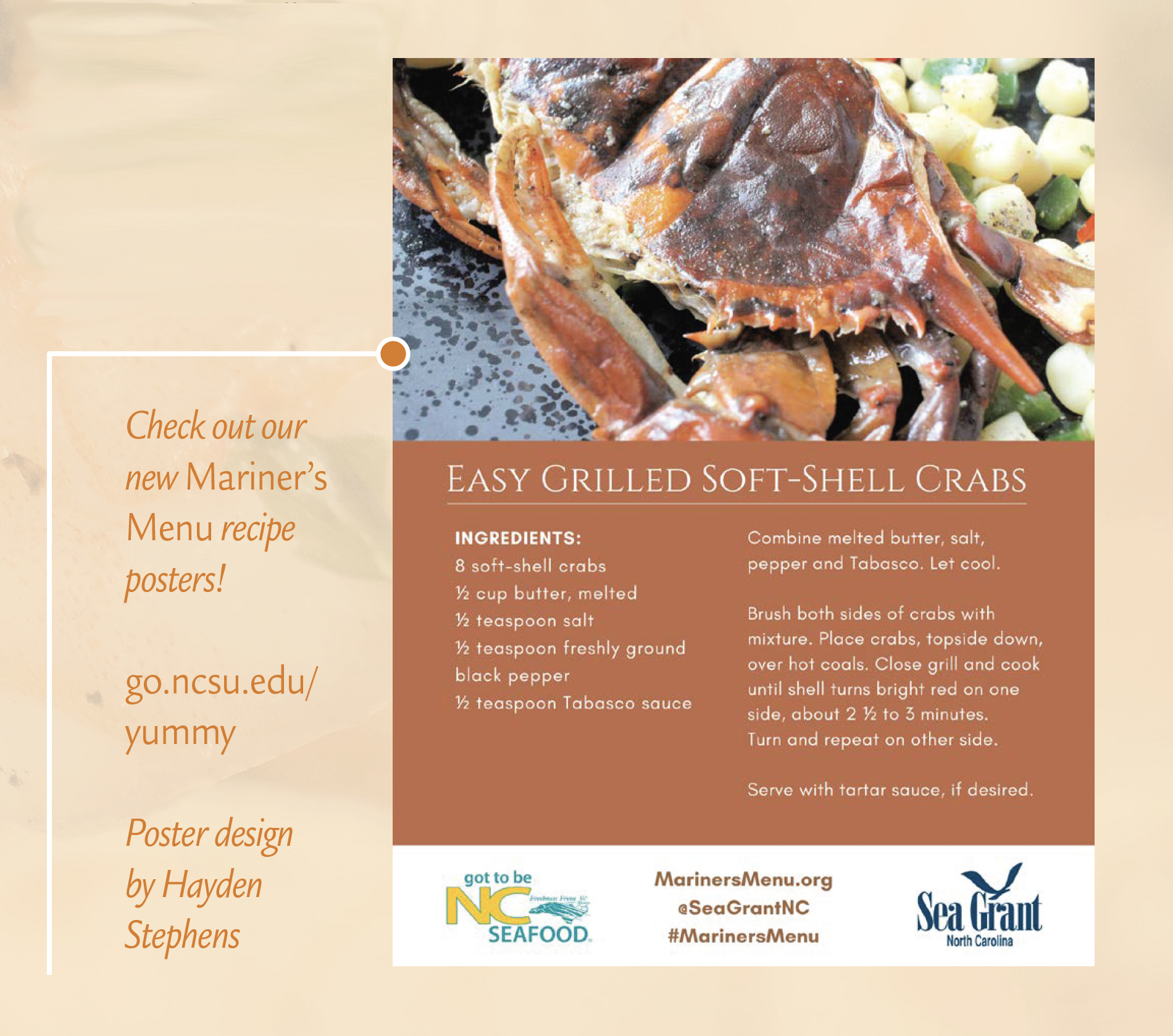Local = Seasonal with North Carolina Seafood
Posted Dec. 10, 2014
By SCOTT BAKER

North Carolina always has provided seafood to local consumers and folks outside of the state. Until the late 1990s, the seafood industry earned sustainable incomes distributing wild-caught seafood along the United States East Coast. When globalization opened domestic markets to less expensive, imported seafood, price became the deciding factor for many seafood purchases.
The United States now imports about 90 percent of the seafood consumed in this country. North Carolina fishermen and fisheries, by definition, have become niche providers. Without employing a way to differentiate local seafood products from imports, there is little reason for wholesale buyers and retailers to offer North Carolina seafood at prices significantly higher than that of imports.
But all is not lost. As globalization ramped up, so did research to determine how these changes were affecting consumers. Fortunately, survey results repeatedly indicated that not only was there a growing preference for local seafood over imports, but there was a strong interest in supporting local fishermen and fishing communities as well.
In order for the North Carolina seafood industry to thrive, not simply survive in this new world, they needed a makeover. More specifically, the industry had to develop a commercial image — logos, brand names, tag lines and the like — so that seafood consumers could connect seafood to local communities.

North Carolina Sea Grant was instrumental in enhancing the market identity of local seafood. We helped to establish four regional catch groups among six coastal counties between 2005 and 2010. A recently published article in the Journal of Extension that I co-authored with my colleagues, Sara Mirabilio and Barry Nash, describes North Carolina Sea Grant’s involvement in this arena. We trace how our initial work with Carteret Catch, a local seafood branding initiative for North Carolina’s central coast, served as a template for other regional efforts — Brunswick Catch, Ocracoke Fresh and Outer Banks Catch.
The success of the four coastal catch groups in raising the awareness of local seafood resulted in the debut of North Carolina Catch in February 2012. Its mission is to assist the seafood industries in all 20 coastal counties to increase the visibility and demand for North Carolina seafood among residents and tourists across the state.

Of course, one of the benefits of supporting local seafood is that you are in fact embracing the seasonal availability of the seafood you love. December in coastal North Carolina brings cooler temperatures and signals changing conditions for some fisheries. This time of year is great for speckled trout, flounder and oysters, among others.
However, if fresh North Carolina shrimp is your thing, you may have missed the boat this year. Sometimes harvests can happen all the way through December in some areas, but most of the catch peaks in the summer, with lower landings overall occurring in the spring and fall. (My colleague, Barry Nash, can tell you about frozen shrimp.)
It’s easy to forget what is available when. That’s why we updated our popular seafood availability charts for both the Northern and Southern portions of the state. If your favorite seafood is not available now, chances are something else is available. Don’t be afraid to try something new!
Asking for local — and seasonal — seafood supports our local fishing industry and that showcases your knowledge about seasonal seafood availability.
- Categories:


